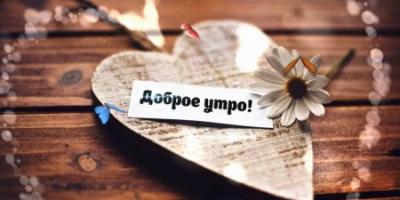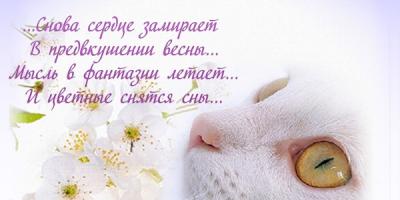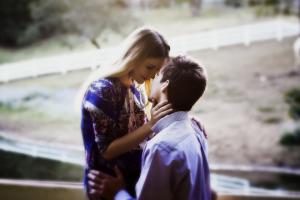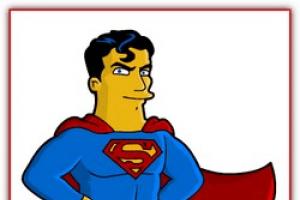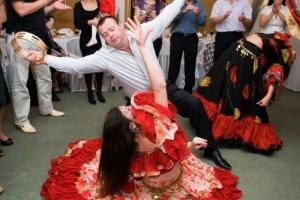It is one of the most important and solemn holidays on the vast territory of our country. Victory Day in Russia is traditionally celebrated on May 9 and gathers hundreds of thousands of people proud of the exploits of their grandfathers and great-grandfathers, who, at the cost of their lives, were able to make our Motherland free from Nazi rule.
The history of Victory Day
Starting on June 22, 1941, the Great Patriotic War lasted 4 years. Despite the enormous losses and devastation, the Soviet people were still able to win this protracted and bloody war. Victory Day of the Russian Army is a reminder of the hard work this victory cost and pays honor to the dead and living heroes of this terrible war. The final effort that led to the final victory was made in the capture of Berlin.
History says that the decisive offensive of the Soviet troops began in January 45, it was then that the army began to advance through the territory of Poland and Prussia. Although the fascist leader Hitler committed suicide on April 20, 1945, this did not stop the war, but led to fierce resistance from the remnants of the enemy troops. Succumbing to the propaganda that the Russians had come to take revenge, the German soldiers defended themselves to the last drop of blood.
Soviet and allied troops encountered the most stubborn resistance during the capture of Berlin. This battle became one of the bloodiest in all the years of the war. The German capital capitulated only after losses on both sides amounted to several hundred thousand. Victory Day of Russian soldiers is a tribute to the respect and memory of the soldiers who fell in that last battle. On the afternoon of May 7, 1945, Nazi Germany signed its surrender.
History says that in the Battle of Berlin alone, the Soviet army lost more than 325 thousand soldiers and officers. According to rough estimates, for each of the days that brought our people closer to Victory Day, we had to pay a high price (about 15,000 killed soldiers per day). In total, 2.5 million soldiers took part in the operation to capture Berlin.
Many beautiful words have been said about Victory Day, but not everyone knows that fascist troops fought for every Berlin street to the last. The narrow passages between the houses did not allow using all the advantages of aviation and tank equipment, so combat losses were enormous.
During the several weeks of the assault on Berlin, Soviet troops lost almost 2,000 tanks, about 2,000 guns and approximately 900 aircraft. Many participants in these events still remember those bloody days with trembling. Although the losses of the Soviet troops were enormous, the Nazis lost much more. About 500 thousand prisoners were captured alone, and a total of 92 enemy divisions were defeated.
Human losses during the Second World War among the Soviet population
During the war years, the USSR lost about 26.6 million inhabitants. This number included not only soldiers, but all residents who died in one way or another as a result of the long years of war. Men died the most during World War II—about 20 million. People who were taken out or left the Soviet Union during the war and did not return there after its end are also included in the total number of victims.
Why Victory Day is held on May 9
Despite the fact that the German surrender was signed on May 7, history tells that Stalin did not recognize it, since General Susloparov, who signed this document, did not have the authority of the Kremlin. At the request of Stalin, Field Marshal Keitel created a new act, which was signed on May 9 at 00:43 hours. Due to the time difference with Europe, this holiday is celebrated there on May 8th.
By decree of the Supreme Council signed by Kalinin, all events to celebrate Victory Day were scheduled for May 9. This day was declared a public holiday and a day off. In the morning at 6 o'clock this decree was brought to the attention of the Soviet people by radio. Preparations for the Victory Day holiday began immediately. Late in the evening, a grandiose festive fireworks display was held - 30 salvos from a thousand guns, which became the largest in the entire history of the USSR.
Although Victory Day was held on May 9, 1945, the military parade took place on June 24. During the parade, combat regiments from all fronts led by commanders and Heroes of the Soviet Union marched across Red Square. At the end of the parade, 200 banners of Nazi Germany were brought to the Mausoleum and thrown.
The following year, the parade was moved to May 9, as it was on this day that Germany signed its surrender. However, already in 1947, the USSR government decided to cancel the May 9 holiday, and decided not to hold parades at all. This decision was dictated by the fact that the people are tired of the war and want to forget the difficult war years, and the military parade only reopens old wounds.
12 years passed after Stalin's death, when the USSR government decided to resume the Victory Day holiday. In 1965 (May 9), Victory Day was again recognized as a public holiday and a day off. Along with the holiday, the tradition of holding annual military parades was also restored.
After the collapse of the USSR, Victory Day was not celebrated in Russia until 1995. On May 9, 1995, the holiday was restored again, and this year there were two military parades, one traditional on foot, and the second with the participation of armored vehicles.
Victory Day and its significance for Russia
In order for us to celebrate Victory Day, our grandfathers and great-grandfathers gave their lives. In Russia, this holiday is celebrated on a grand scale and is one of the most important public holidays. Despite the difficult 90s, people always remembered this bright and joyful holiday and celebrated it every year even in a narrow family circle. Every resident of Russia has an ancestor who took up arms in defense of his country from the terrible threat hanging over it and was able to snatch victory from the tenacious clutches of fascism.
Those who during the war, due to health reasons, could not participate in hostilities, selflessly worked in the defense industry, supplying the front with everything necessary. Most of the workers were drafted to the front during the war, so teenagers and women took their places. Largely thanks to their heroic efforts, the great victory of the Soviet people over the German occupiers became possible. Despite the hunger and devastation, these people with all their might brought the hour of victory closer, losing their health and sometimes their lives.
How is Victory Day celebrated in Russia now?
Traditionally, festive events are held on Victory Day:
- Traditional rallies and demonstrations are organized;
- Flowers and wreaths are laid at the foot of the monuments;
- Festive congratulations are being held for veterans of the Great Patriotic War;
Despite the fact that this holiday is not characterized by a lot of noisy fun and festivities, its significance lies in the fact that people remember and respect their fallen heroes. The younger generation, having seen newsreels of the war years, begins to understand what a great mission their ancestors were able to accomplish, and sincere front-line songs make them think about the difficult years of the war.
Although more than 70 years have passed since the first festive fireworks thundered on May 9, Victory Day is still a sacred holiday for every resident of the CIS, because the entire people rose up to defend the Motherland from the invader and many families lost one or more of their members.
The main attribute of Victory Day
One of the honorable traditions dedicated to Victory Day is the carrying of the red banner. This tradition began in 1965, when Victory Day was returned to the status of a public holiday. This banner was exactly the flag that was hung over the Reichstag.
The history of this banner is quite interesting. Despite the popular belief that this banner was first displayed at a military parade in 1945, this is not the case. Due to the wounds of the standard bearer and insufficient combat training of other applicants for carrying out the banner, Marshal Zhukov was forced to cancel the ceremonial removal of the banner.
The original banner was first displayed at the 1965 parade, after which it was placed in a museum, and its place was taken by a complete copy, which was carried out over the following years. The original banner is still kept in the Museum of the Armed Forces.
Heroes - winners of the Great Patriotic War
Time inexorably ticks down year after year, and every spring fewer and fewer veterans of the Great Patriotic War come to Victory Day. Now no more than 2 percent of the heroes who were able to return alive from the war are alive. Despite front-line wounds and illnesses, surviving veterans still gather for the holiday. They gather together, quietly remembering their fallen comrades and the difficult years at the front.
The heroes of the Great Patriotic War should be treated with special respect, remembering that it is thanks to their efforts that we, their descendants, can enjoy freedom.
Veterans visit monuments dedicated to the victory in the Second World War and the memory of fallen heroes, travel to places of military glory, and visit places that are memorable to them. We must remember that very little time will pass and there will be no living participants in that terrible war left at all.
The main monuments dedicated to front-line soldiers
In the vastness of Russia and the CIS there are a large number of monuments and memorials that were erected over seven decades. Let's try to list the most famous of them:
- Poklonnaya Mountain. This park is a memorial complex that perpetuates the memory of the fallen Heroes of the Great Patriotic War. He is located in Moscow. Poklonnaya Mount has been known since ancient times; travelers who wanted to view Moscow from above and worship its churches stopped there. This is where the name “Poklonnaya Gora” comes from. Victory Park on this mountain was founded back in 1958, but the completion of construction and opening of the complex occurred only in 1995;
- Mamaev kurgan. On the mound in Volgograd, which has been known since the time of the Mongol invasion, bloody battles for Stalingrad took place in 1942-1943. Today, on the mound there are several mass graves and a monument “The Motherland Calls!” This complex is applying for inclusion in the UNESCO list;
- In Novosibirsk there is a memorial complex called “Heroes Square”. What makes it special is that it is a park with many trees and flowers. There is an extensive memorial complex on Heroes Square. In 1958, an eternal flame was lit on the square, which still burns to this day;
- The Alley of Heroes in St. Petersburg is part of Moscow's Victory Park. Its peculiarity is the composition of busts of twice Heroes of the Soviet Union, who were residents of Leningrad. In the center of the composition is a monument to Marshal of the Soviet Union G.K. Zhukov, which was erected at the request of WWII veterans for the 50th anniversary of Victory Day;
- The Eternal Flame of Glory is a memorial located in Veliky Novgorod. It was built on the site of two mass graves, one of which dates back to 1944. 19 dead soldiers of the 59th Army are buried there. This memorial is notable for the fact that from 1975 to 1986 a guard of schoolchildren stood near the eternal flame. The duty changed every 15 minutes and lasted from 9 a.m. to 6 p.m. In 1986, this guard was abolished;
- The Tomb of the Unknown Soldier is located in Moscow, near the walls of the Kremlin. This memorial is a bronze composition of a soldier’s helmet and laurel branches, which lie on the banner. In the center of the memorial there is a niche with the inscription “Your name is unknown, your feat is immortal.”
In addition to the listed memorials and parks, there are thousands of monuments throughout the country that remind people of the heroes of the Second World War.
Victory Day is a holiday dedicated to all those who died, fought and worked in the rear, who through their heroic efforts were able to bring this bright day closer.
If you have any questions, leave them in the comments below the article. We or our visitors will be happy to answer them

I am interested in martial arts with weapons and historical fencing. I write about weapons and military equipment because it is interesting and familiar to me. I often learn a lot of new things and want to share these facts with people who are interested in military issues.
Victory Day or May 9 is a celebration of the victory of the Soviet army over Nazi Germany in the Great Patriotic War of 1941-1945.
First day of victory
The first Victory Day in history was celebrated by the Soviet people on May 9, 1945. On the occasion of the celebration, a Victory Salute was organized in Moscow - 30 victorious salvoes fired from thousands of anti-aircraft guns. There was no military parade that day, which, however, is not surprising. It took place on Red Square only a month and a half later - on June 24, and this entire period of time was spent on the necessary preparations.
The photo shows the first victory day in history - May 9, 1945. Neither the people nor the current government had time to prepare for the holiday, but that didn’t matter at all! The Soviet people were happy because the most long-awaited day had arrived - the day of the end of the Great Patriotic War.
Brief history of the holiday
The day after the death of A. Hitler, May 1, 1945, the German command decided to negotiate a truce with the USSR, but I. Stalin stated that he would only be satisfied with unconditional surrender. There was no response from Germany, after which the Soviet army dealt a crushing blow to Berlin. On the morning of May 2, Berlin was captured by Soviet soldiers, but the hostilities did not end there: German troops resisted for several more days.
The act of unconditional surrender was signed on the night of May 9, and in the morning a Decree of the Presidium of the Supreme Soviet of the USSR was issued declaring May 9 the Victory Day and an official holiday.

Photo of the document recognizing May 9 as Victory Day.
May 9 in the USSR

The photo shows a military parade in honor of Victory Day on Red Square during the Soviet era.
After the end of the Second World War, Victory Day or May 9 from 1945 to 1948 was an official holiday and a non-working day, but later the day off was canceled. Only 20 years after the victory, when Brezhnev came to power, the May 9 holiday again became a day off.
How Victory Day is celebrated in modern Russia

The photo shows a military parade on Red Square after the collapse of the USSR.
After the collapse of the USSR, the first military parade on Red Square took place in 1995 in honor of the anniversary of the Victory, after which the festive procession became an annual event. Since 2008, the parade has been held with the participation of military equipment.
Victory Day Parade 2016
Video source: Russia 24
Victory Day traditions

The photo shows fireworks on Red Square in honor of Victory Day (May 9).
The main traditions of Victory Day include:
- Laying flowers at the monument to war heroes or the unknown soldier;
- A minute of silence in memory of the fallen soldiers;
- A festive parade that is held in all major cities;
- Festive fireworks in the evening, usually at 22 o'clock.
St. George Ribbon

The picture shows the St. George ribbon.
A new attribute of Victory Day is the St. George Ribbon, made of two colors: orange and black. It is believed that the black color symbolizes gunpowder, and the orange symbolizes fire, but the ribbon itself is not directly related to the Second World War.
The history of the ribbon takes us back to the reign of Empress Catherine II, who established the soldier's Order of St. George the Victorious, and with it the St. George's Ribbon in 1769 during the Russian-Turkish War. The ribbon was complemented by the motto: “For service and courage” and it was awarded to the most courageous and loyal soldiers of the Russian Empire as an encouragement. The ribbon was not just a symbol - it was accompanied by lifelong payments to the owner, after whose death the ribbon was inherited. It could be confiscated from the owner in the most exceptional cases, for example, in case of a gross violation of the law.
This combination of colors became a symbol of courage and courage, and therefore was widely used in the design of military orders and awards after the end of the empress’s reign.
Since 2005, St. George ribbons have been distributed free of charge in public places to everyone who wants to honor the memory of fallen soldiers and express admiration for the courage of veterans of the Great Patriotic War.
History of the St. George Ribbon
Video source: Ru VideoNews
On May 9, Russia celebrates a national holiday - Victory Day in the Great Patriotic War of 1941-1945, in which the Soviet people fought for the freedom and independence of their Motherland against Nazi Germany and its allies. The Great Patriotic War is the most important and decisive part of the Second World War of 1939-1945.
The Great Patriotic War began at dawn on June 22, 1941, when Nazi Germany, violating the Soviet-German treaties of 1939, attacked the Soviet Union. Romania, Italy took her side, and a few days later Slovakia, Finland, Hungary and Norway.
The war lasted almost four years and became the largest armed conflict in human history. On the front, stretching from the Barents to the Black Sea, from 8 million to 12.8 million people fought on both sides at different periods, from 5.7 thousand to 20 thousand tanks and assault guns, from 84 thousand to 163 thousand guns and mortars were used , from 6.5 thousand to 18.8 thousand aircraft.
Already in 1941, the plan for a lightning war, during which the German command planned to capture the entire Soviet Union in a few months, failed. The persistent defense of Leningrad (now St. Petersburg), the Arctic, Kyiv, Odessa, Sevastopol, and the Battle of Smolensk contributed to the disruption of Hitler’s plan for a lightning war.
The country survived, the course of events turned. Soviet soldiers defeated fascist troops near Moscow, Stalingrad (now Volgograd) and Leningrad, in the Caucasus, and inflicted crushing blows on the enemy in the Kursk Bulge, Right Bank Ukraine and Belarus, in the Iasi-Kishinev, Vistula-Oder and Berlin operations.
Over the course of almost four years of war, the Armed Forces of the USSR defeated 607 divisions of the fascist bloc. On the Eastern Front, German troops and their allies lost more than 8.6 million people. More than 75% of all enemy weapons and military equipment were captured and destroyed.
The war, which was a tragedy in almost every Soviet family, ended in victory for the USSR. The act of unconditional surrender of Nazi Germany was signed in the suburbs of Berlin on May 8, 1945 at 22.43 Central European time (Moscow time on May 9 at 0.43). It is because of this time difference that the Day of the end of World War II in Europe is celebrated on May 8, and in the USSR and then in Russia - on May 9.
According to the decree of the President of the Russian Federation of April 15, 1996, on Victory Day, when laying wreaths at the Tomb of the Unknown Soldier, holding ceremonial meetings, military parades and processions of Great Patriotic War veterans on Red Square in Moscow, along with the State Flag of the Russian Federation, the Victory Banner hoisted above the Reichstag is carried out in May 1945.

Since 2005, a few days before Victory Day, it starts with the goal of returning and instilling the value of the holiday in the younger generation. Black and orange ribbons have become a symbol of memory of the Victory in the Great Patriotic War, a sign of gratitude to the veterans who liberated the world from fascism. The motto of the action is “I remember, I am proud.”
The action covers almost the entire territory of Russia, many countries of the former USSR, and in the last few years it has also taken place in the countries of Europe and North America.
According to established tradition, veterans’ meetings, ceremonial events and concerts are held on Victory Day. Wreaths and flowers are laid at monuments of military glory, memorials, and mass graves, and guards of honor are displayed. Memorial services are held in churches and temples in Russia. Since 1965, radio and television have been broadcasting a special solemn and mourning program “Minute of Silence” on May 9.
On May 9, 2013, a military parade will be held in 24 cities of the country. 11 thousand 312 people will take part in the parade on Red Square in Moscow. It will involve 101 units of weapons and military equipment. Eight helicopters will carry the flags of the branches and branches of the military.
(Additional
It would seem that May 9, 1946 is the first anniversary of the victory. Parade, orders, drums, balloons? ZERO! 1950 is the fifth anniversary of victory. ZERO! 1955 - 10 years of the GREAT VICTORY! ZERO! The country annually celebrates the great October Revolution, the anniversary of Lenin, May 1, and, ultimately, the New Year with pomp.
But on May 9, slaves culturally work for the victory of communism in collective farms and factories. There are no medals or badges of honor in honor of the anniversary of the victory, there are no associations of front-line soldiers. On the contrary, the generals immediately after 1945 were shaken by arrests and inspections. This is understandable, because of the style. But where is agitprom looking? 1960 - ZERO! The celebration begins only in 1965 and the victorious front-line soldiers begin to be presented as helpless pensioners who need to be “helped” and respected. WHY??
“Victory Day” was not celebrated in the USSR for 20 years because of the Soviet authorities’ fear of real veterans. When in 1965 the balance of veteran forces outweighed the real front-line soldiers in favor of the veterans of the punitive units, “May 9” began to be carefully used to promote communo-fascism, and then the “May 9”, which was under the control of the authorities, simply turned into pompous drunken orgies of victory for the self-affirmation of the descendants of Soviet fascists - bureaucrats of the NKVD, CPSU and Komsomol - front-line soldiers were and are used as living museum exhibits of propagandists of both the Soviet and post-Soviet era.
The fact that they like to lie to us about this, that they say that for the first twenty years there were no celebrations because we had to work and raise the country from the ruins... Therefore... that's why there were no celebrations... So this is pure nonsense. After all, the USSR celebrated February 23, November 7, May 1 and other holidays even during the war.
The answer is simple. The Bolshevik victorious seizure of the continent did not happen as planned by the CPSU (b); Adolf Hitler cleverly beat them to the punch by attacking first.
But the main reason was that after the war there were men who were real veterans, front-line wolves who tried all the “delights” of war. They went through fire, and it was no longer so easy to break their spirit; the front-line soldiers despised the party nomenklatura. At 45 they were 30-40 years old or more. If you say the word “war” in front of them, or otherwise remind them of what happened, you could actually be killed. Chop on the spot. Among these people were shell-shocked and severely maimed. And they well remembered the care of the Father of all nations - Stalin and the party for them, as on the Wotan line, at the crossing of the Dnieper, they remembered Rzhev and Volkhov and much more. So, just 20 years later, these same veterans had already died, and what remained were the quartermasters, rear rats and veterans of the NKVD-MGB and SMERSH special officers, along with freshly minted 18-year-old green-mouthed guys who only tried the war at the end in 1944 and 1945. That’s when the decision was made to celebrate May 9....”
Frankly, I only learned a couple of years ago that the victory in the Great Patriotic War had not been celebrated for 20 years. galkovsy Yesterday I returned to this issue. A short excerpt from his long and obscure article.
Have you ever wondered why the stupid one-eyed Soviet agitprop did not celebrate the victory over Germany for 20 years? It would seem - May 9, 1946, the first anniversary of the victory. Parade, orders, drums, balloons. ZERO. 1950 is the fifth anniversary of victory. ZERO. 1955 - 10 YEARS OF THE GREAT VICTORY. Every year in the country the great October Revolution, the anniversary of Lenin, the first of May, and, ultimately, the New Year are celebrated with pomp. Soviet people love holidays and anniversaries; they are, one might say, obsessed with them. But on May 9th they work culturally in production. There are no medals or badges of honor in honor of the anniversary of the victory, there are no associations of front-line soldiers. On the contrary, the generals immediately after 1945 were plagued by arrests and inspections. This is understandable, because it’s style. But where is agitprop looking? 1960 - zero. The celebration begins only in 1965 and the victorious front-line soldiers begin to be presented - correctly - as helpless pensioners who need to be “helped”. Why? A real, modern, living celebration of victory would raise a generation of proud independent people, winners. And the “sixties” grew up. “I’m an insignificant fool, I have a cap” and other okudzhava.
Or maybe that’s how it all happened? I don't think so.
First of all, Galkovsky is inaccurate. The holiday was introduced in 1945. And in 1946 there was no “ZERO” - it still took place. But already in 1947, May 9 really became a working day. Historians write that Stalin was afraid of front-line soldiers. And not in vain, they went through fire, and it was no longer so easy to break their spirit, the front-line soldiers despised the party nomenklatura, did not part with their weapons, so lynching happened quite often. The cancellation on May 9 should have served as a lesson for them. And all the same, I don’t think that the country’s leadership had any special plan to erase the spirit of the victorious people from the Soviet people. As for the return of May 9 to holiday status, Leonid Ilyich did his best here. The fact is that Brezhnev loved holidays very much. In addition, he was a front-line soldier, and having become the head of the state, he very soon decided that Victory Day should be celebrated. And even with a military parade. At the same time, he himself put on a marshal's uniform. Did I say Leonid Ilyich loved holidays? No, he really loved holidays. True, later the Politburo pointed out that there were some excesses, perhaps this was too much - a parade on the first of May and the ninth with military equipment, the costs were too high. So the May 9th parades were cancelled.
And among the sixties, by the way, there are many worthy people, especially in literature. Take the Strugatsky brothers, for example. In general, the man got excited. It happens to everyone.

